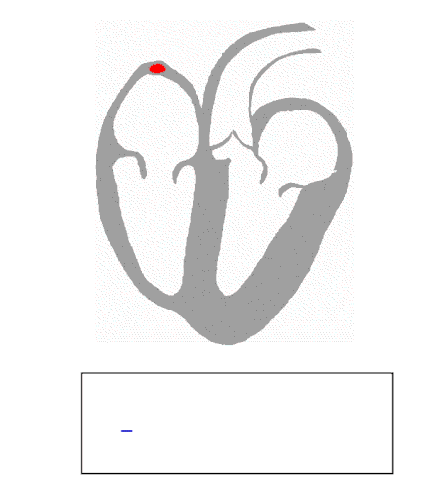Wolff–Parkinson–White Syndrome
Wolff–Parkinson–White Syndrome (WPWS) is a disorder characterised by an abnormal electrical pathway in the heart, known as the bundle of Kent. This accessory pathway allows electrical impulses to bypass the atrioventricular (AV) node, leading to episodes of rapid heart rate or tachyarrhythmias. This essay will provide an overview of WPWS, including its signs and symptoms, pathophysiology, diagnosis, and treatment options.

Signs and Symptoms
Individuals with WPWS are often asymptomatic when not experiencing a rapid heart rate. However, during episodes of supraventricular tachycardia, they may experience palpitations, dizziness, shortness of breath, or syncope (fainting). WPW is associated with a small risk of sudden cardiac death due to dangerous heart rhythm disturbances.

Pathophysiology
In a normal heart, electrical activity begins in the sinoatrial (SA) node, travels through the AV node, and then to the ventricles via the bundle of His and Purkinje fibres. The AV node serves as a gatekeeper, limiting excessive electrical activity from the atria reaching the ventricles. In WPWS, an accessory pathway (bundle of Kent) bypasses the AV node, allowing rapid conduction of electrical impulses directly from the atria to the ventricles.


Diagnosis
WPW is commonly diagnosed through electrocardiogram (ECG) findings in an asymptomatic individual. Key ECG characteristics include a short PR interval (less than 120 milliseconds), a delta wave (slurred upstroke in the QRS complex), and a widened QRS complex (greater than 120 milliseconds). These features reflect the early activation of the ventricles via the accessory pathway without the usual delay experienced in the AV node.

Risk stratification is performed by assessing how frequently the accessory pathway can conduct impulses to the ventricles, often via programmed electrical stimulation (PES) in a cardiac electrophysiology laboratory.

Treatment
Treatment for WPW depends on the presence and severity of symptoms.
Medications
Medications may include beta-blockers or calcium channel blockers for managing stable cases. For acute episodes of atrial fibrillation with rapid ventricular response, procainamide or amiodarone might be used, although amiodarone has been linked to ventricular fibrillation in WPW patients.
Catheter Ablation
The definitive treatment for WPW is catheter ablation, which involves destroying the abnormal electrical pathway. This procedure, performed by cardiac electrophysiologists, has a high success rate (up to 95%) and low recurrence rate (less than 5%) when performed successfully.

History
WPW syndrome was first described in 1930 by Louis Wolff, John Parkinson, and Paul Dudley White. The bundle of Kent, an accessory pathway, is named after Albert Frank Stanley Kent, who described lateral branches in the atrioventricular groove of the monkey heart.
Notable Cases
Several notable individuals have been diagnosed with WPW, including American basketball player LaMarcus Aldridge, actor Michael Cera, and musician Jessie J, highlighting the syndrome's presence across various fields.
Self-assessment MCQs (single best answer)
What is the primary abnormality in Wolff–Parkinson–White Syndrome (WPWS)?
Which of the following is NOT a common symptom of WPWS during a tachyarrhythmia episode?
In WPWS, what is the characteristic ECG finding that indicates early activation of the ventricles?
Which node normally acts as the gatekeeper to limit excessive electrical activity from the atria to the ventricles?
What is the definitive treatment for WPW syndrome?
Who were the first to describe WPW syndrome?
Which medication is used for acute episodes of atrial fibrillation with rapid ventricular response in WPW but has been linked to ventricular fibrillation?
What is a key ECG characteristic used to diagnose WPWS?
What is the success rate of catheter ablation in treating WPW syndrome?
Which notable person has NOT been diagnosed with WPW syndrome?
Dentaljuce
Dentaljuce provides Enhanced Continuing Professional Development (CPD) with GDC-approved Certificates for dental professionals worldwide.
Founded in 2009 by the award-winning Masters team from the School of Dentistry at the University of Birmingham, Dentaljuce has established itself as the leading platform for online CPD.
With over 100 high-quality online courses available for a single annual membership fee, Dentaljuce offers comprehensive e-learning designed for busy dental professionals.
The courses cover a complete range of topics, from clinical skills to patient communication, and are suitable for dentists, nurses, hygienists, therapists, students, and practice managers.
Dentaljuce features Dr. Aiden, a dentally trained AI-powered personal tutor available 24/7 to assist with queries and provide guidance through complex topics, enhancing the learning experience.
Check out our range of courses, or sign up now!


